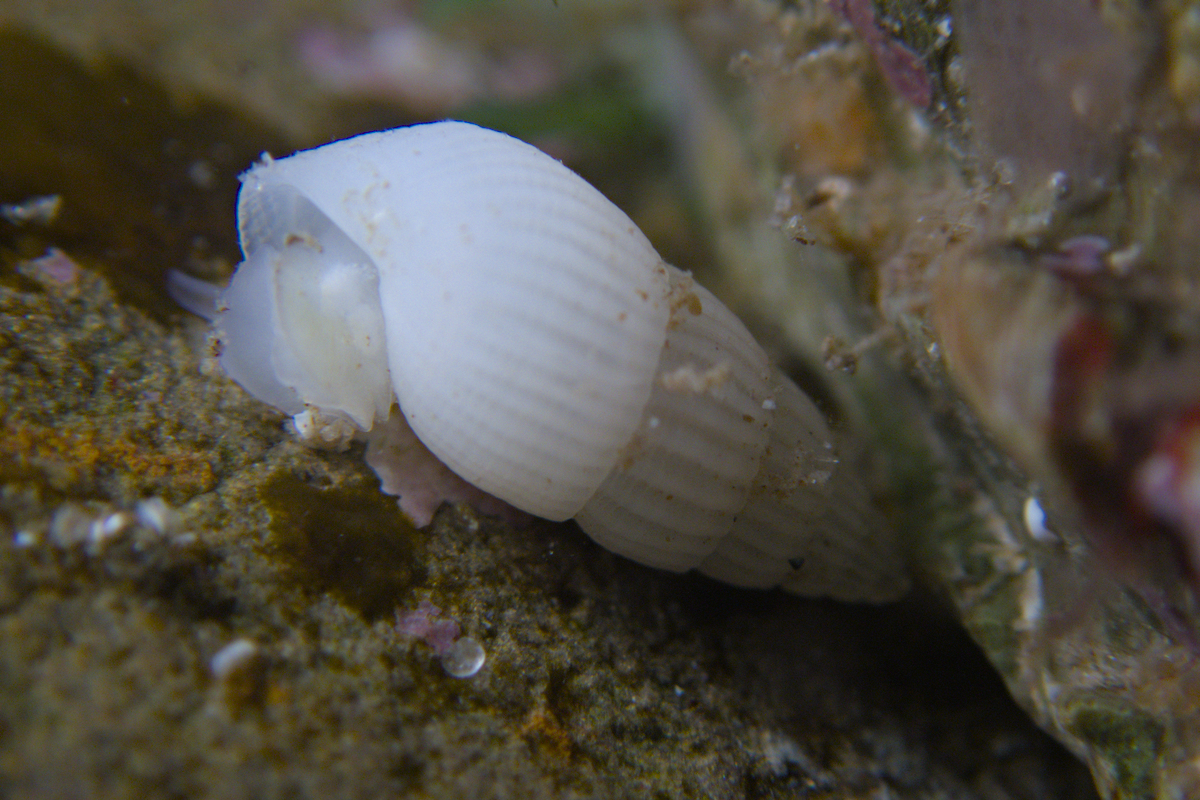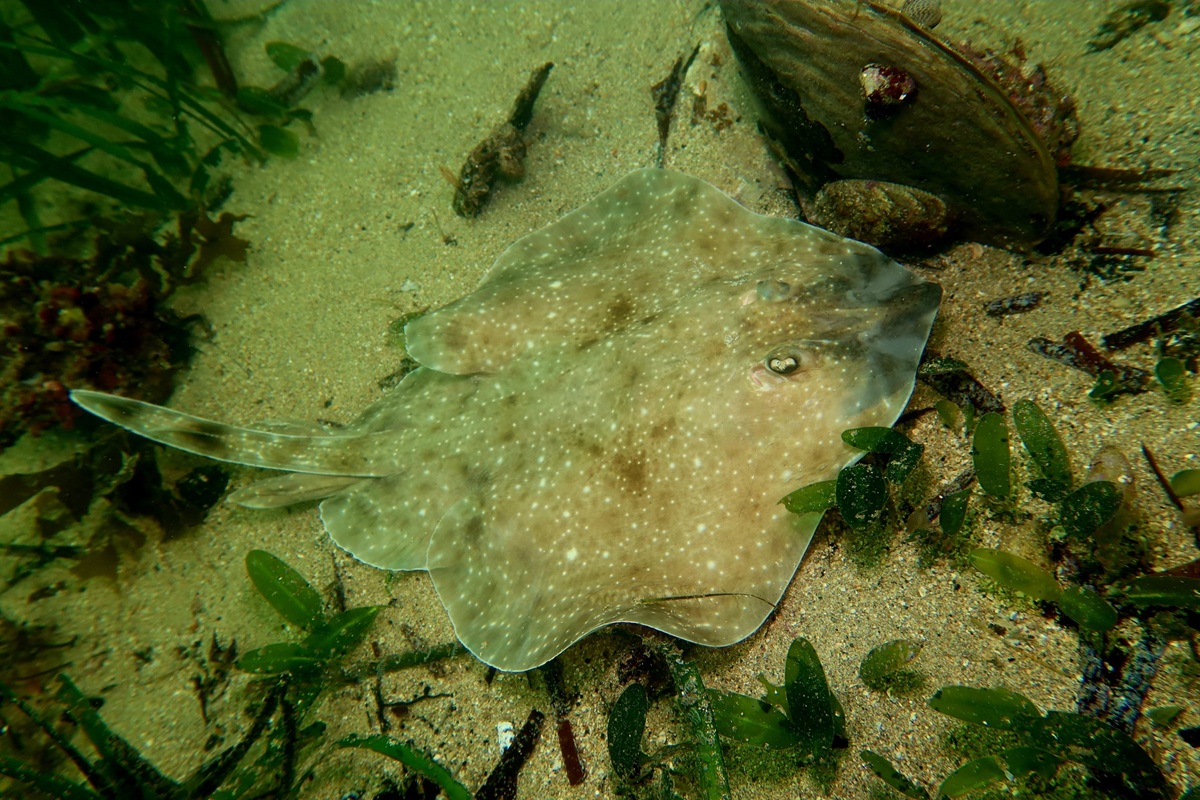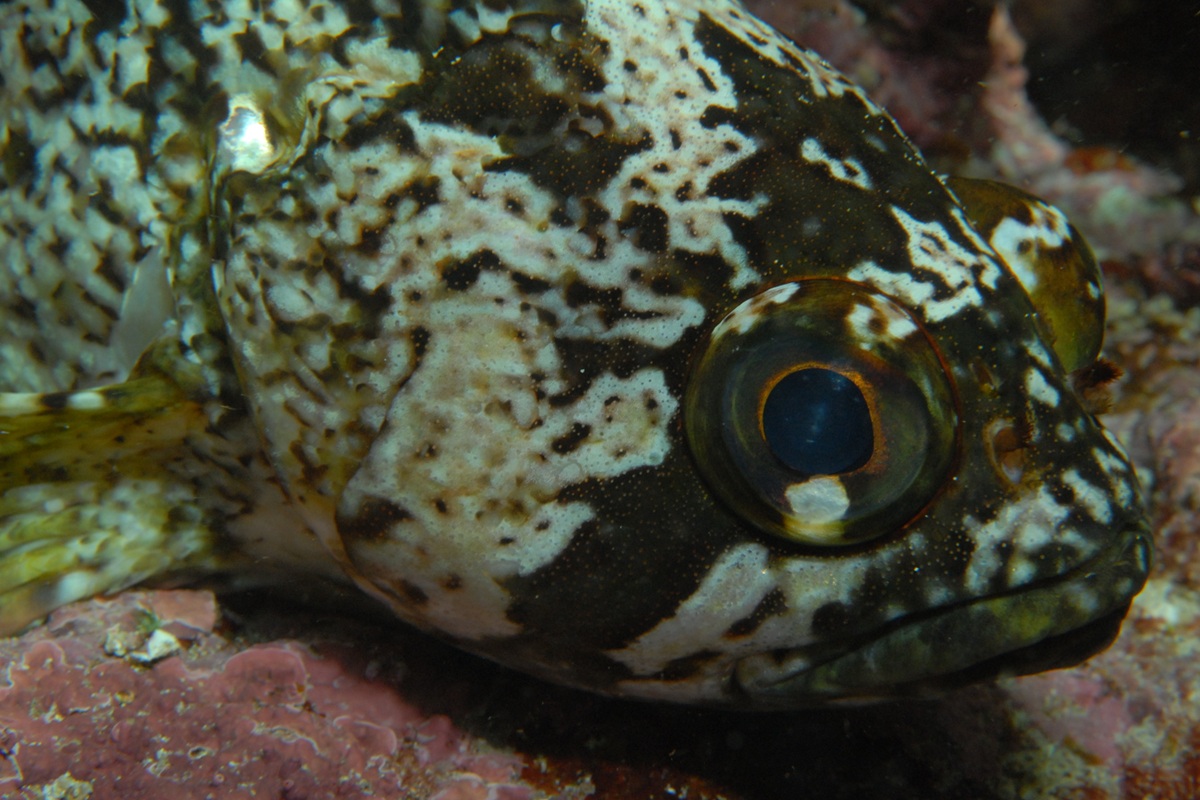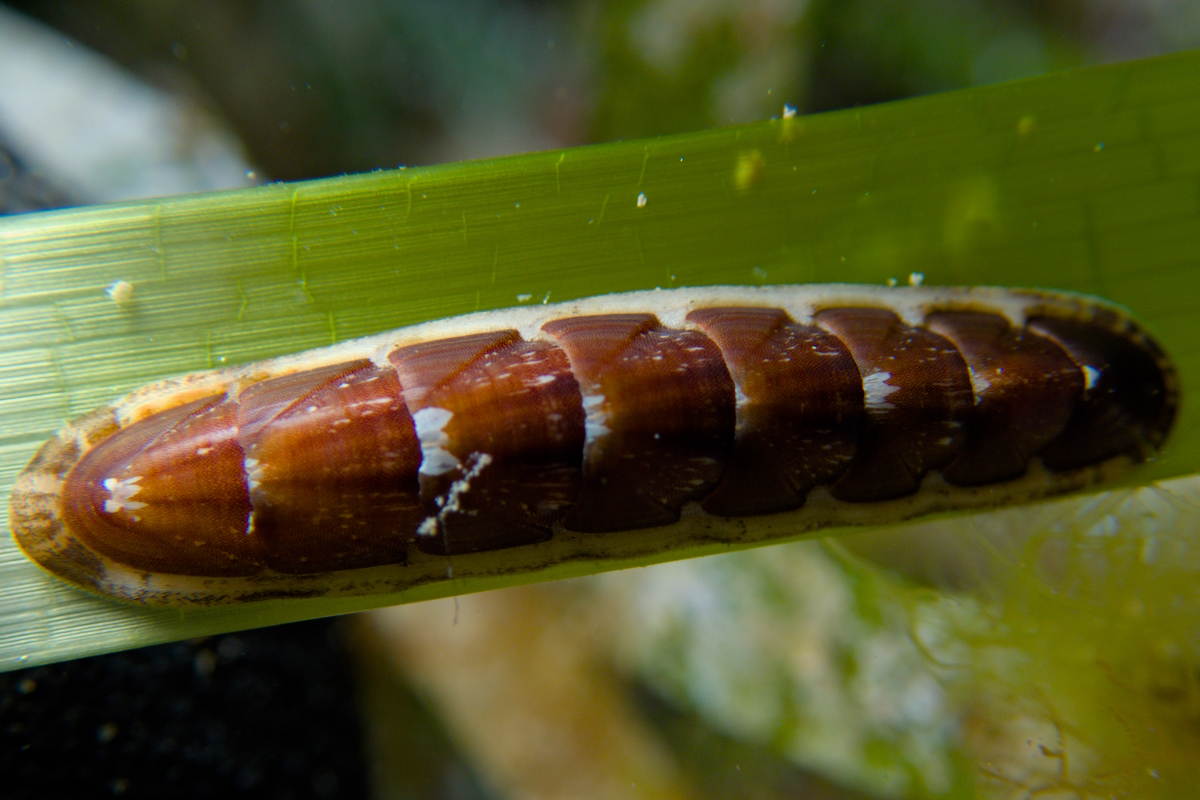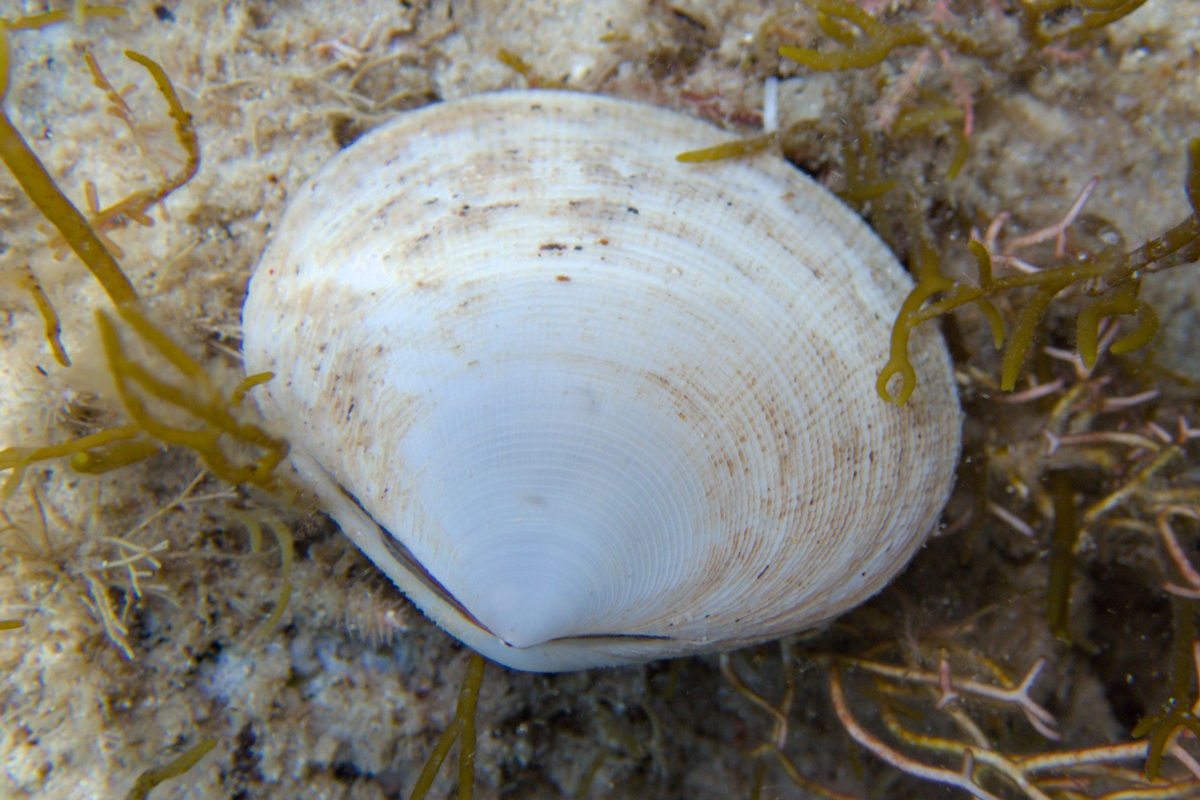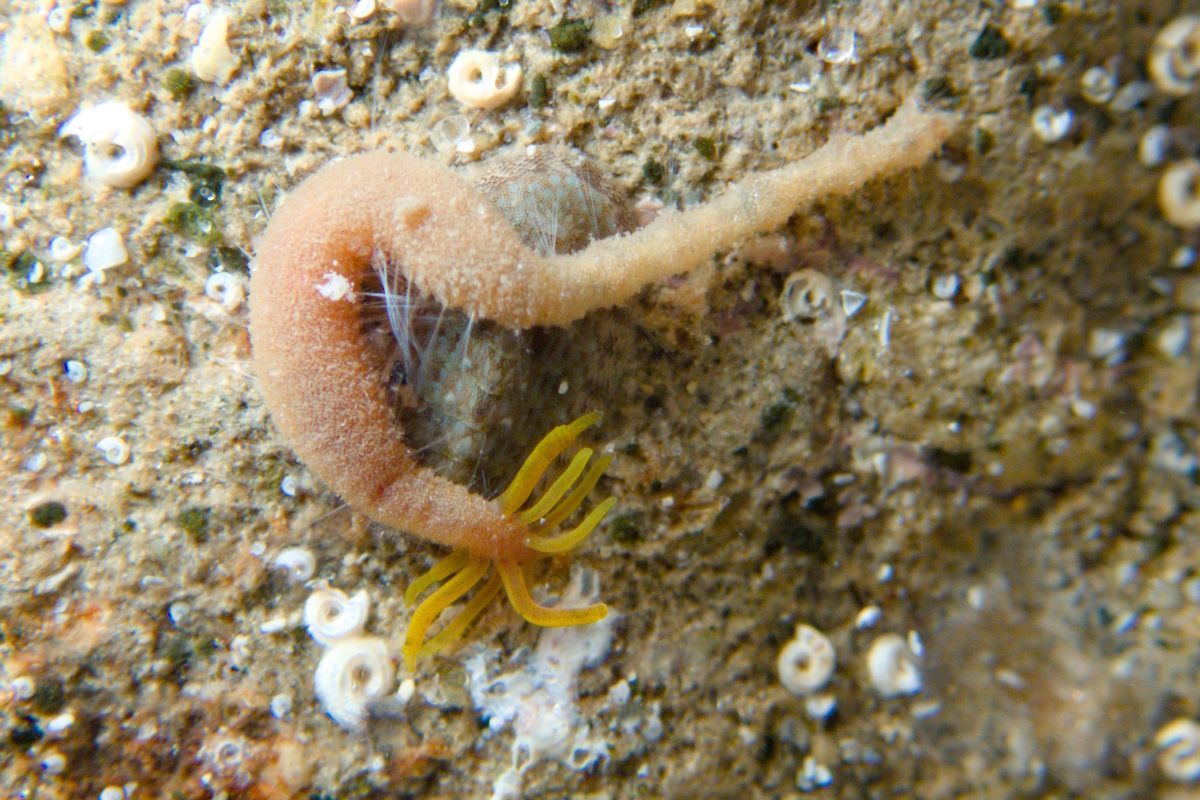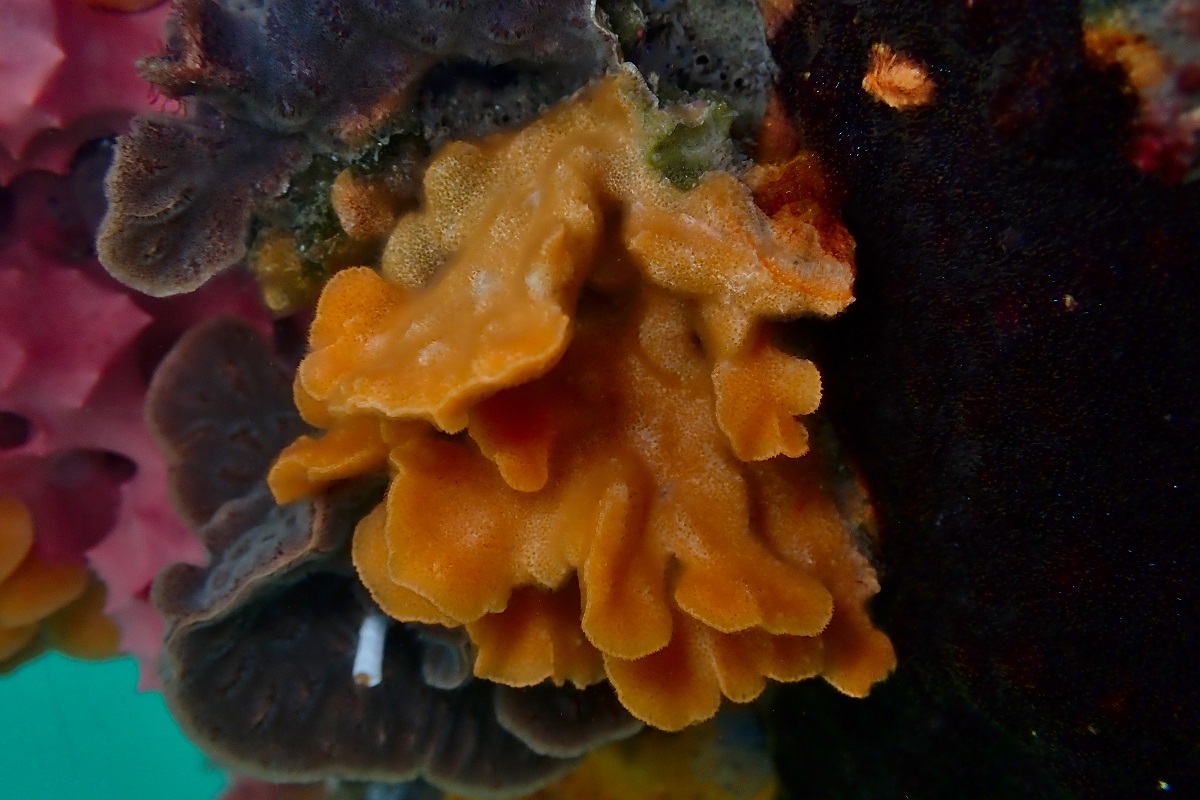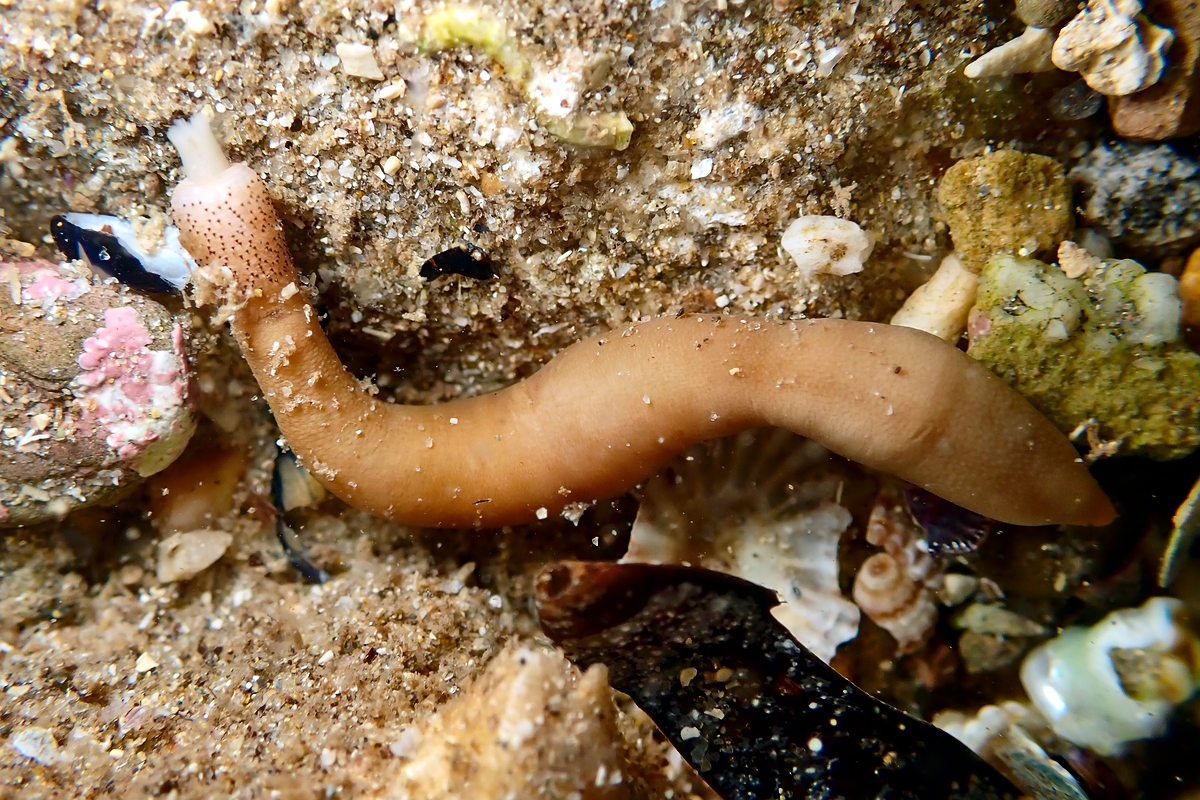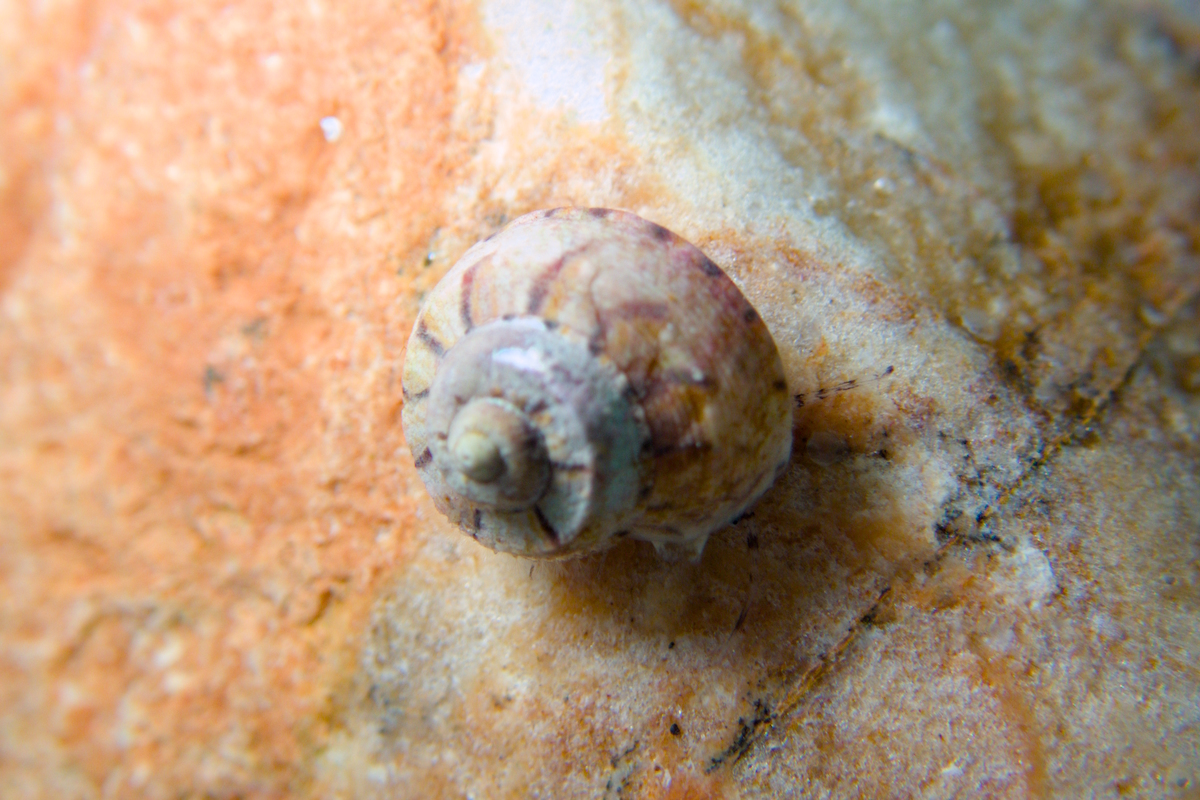Latest Additions and Updates
Pyrgulina pupaeformis
Found in both tropical and temperate Australian waters, this heterobranch snail has a white shell with soft axial ribbing and rounded whorls. It shares similarities with a number of species, most notably Rissoina fasciata, from which it can be distinguished by its comparatively straight ribbing, contrasted against the oblique ribbing of R. fasciata.
Strahlaxius waroona
A rarely encountered mud shrimp, this species is thought to feed in soft sediment. It is mostly white to pinkish in colour with a bluntly tapered, but serrated, rostrum.
Pygmy Thornback Skate
Dentiraja flindersi
Previously only recorded from depths of over 20m, little is known of this rarely-encountered species. Its dense cover of white spots distinguish it from most other skates, while its relatively blunt snout is the best way to differentiate it from its relative, the Whitespotted Skate (Dentiraja cerva), another deeper water species.
Silver Spot
Chironemus maculosus
One of two kelpfish species found in SA, this shy fish is rarely seen due to its camouflage. It is a mottled brown and white, and is notable for the large silver spot on its operculum, which distinguishes it from the Western Kelpfish
Stenochiton longicymba
One of the most elongated species of chiton globally, this species is well-adapted to its habitat on the blades and root sheaths of Posidonia seagrass. It is usually hidden below the sand during the day, but climbs up the seagrass blade at night to feed on epiphytic algae. It can be variable, but is usually dark in colour, with a pale girdle and white broken dorsal stripe. It is most similar to Stenochiton pilsbryanus, with which it shares host species, but is darker and more elongate.
Decussated Tellen
Pseudarcopagia victoriae
A uniform whitish bivalve, with distinct radial and concentric striation, it is less squat than many other clam-like bivalves found in SA. This, along with its large size and coarse striation help to distinguish it from similar species, although expert examination is often required.
Macrochaeta australiensis
This strange-looking worm is known from only a few records in South Australia. It has a pinkish orange body, which is often covered in silt, with small papillae along its length. Its eight tentacle-like branchiae are a bright orange. Along each side of its body, above the parapodia are tufts of very long hair-like setae. This is the only species of its kind found in SA, and it is unlikely to be mistaken for anything else.
Celleporaria foliata
Conspicuous on jetty pylons and rock walls, this bright orange bryozoan colony consists of thick, and usually relatively flat, lobes. Its feeding tentacles give it a fuzzy appearance. This animal could be mistaken for sponges, but anyone familiar with bryozoans should be able to tell the difference immediately on closer inspection.
Phascolosoma annulatum
This smallish peanut worm grows to only a few centimetres in length, when its introvert is retracted. It is light brown in colour, but often has small darker brown papillae over some or all of its body, giving it a rough texture. Although it is relatively distinctive for a peanut worm, close examination is required to differentiate it from some sea cucumbers, as the papillae can resemble tube feet at first glance.
Many Coloured Top Shell
Notogibbula lehmanni
This uncommon snail can be found in rocky environments. Its shell is a tan to pinkish colour with alternating black and pale patches on the shoulder of the whorls. It is similar to other trochid snails, but its straight whorls with distinct shoulders distinguish it from Notogibbula preissiana (concave whorls) and some Clanculus species (mostly rounded whorls).
